Alaska’s icy landscapes represent some of the most extreme environments on Earth, yet they teem with remarkable wildlife that has evolved specialized adaptations to survive the frigid conditions. From the expansive sea ice of the Arctic Ocean to the massive glaciers that carve through mountains, these frozen realms support a surprising diversity of life. The animals that make these icy habitats their permanent homes year-round face temperatures that regularly plunge far below freezing, months of darkness during polar winter, and physical challenges that would be insurmountable for most species. These incredible creatures haven’t just adapted to survive in the ice—they’ve evolved to thrive there, developing remarkable physiological and behavioral strategies that allow them to embrace Alaska’s frozen wilderness as their home. Let’s explore the fascinating world of Alaska’s year-round ice dwellers and discover how they’ve mastered life in one of Earth’s most demanding environments.
Polar Bears: Masters of the Sea Ice
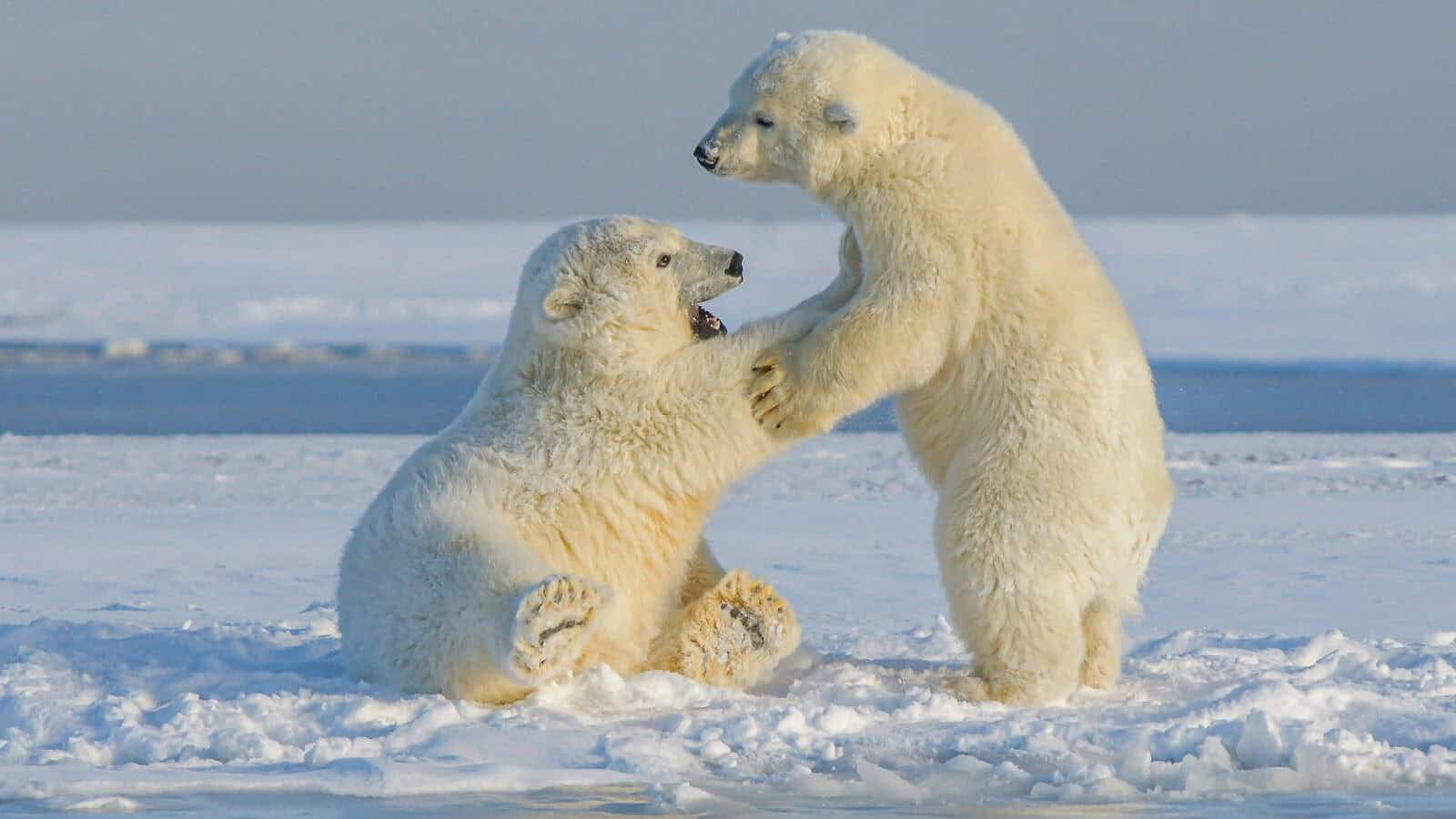
Polar bears (Ursus maritimus) stand as the iconic symbols of the Arctic sea ice environment, having evolved specifically to thrive in Alaska’s frozen marine ecosystems. With their massive bodies—males can weigh up to 1,500 pounds—covered in dense, water-repellent fur and a thick layer of blubber that can reach 4.5 inches, these magnificent predators are perfectly adapted for life on the ice year-round. Their white coats provide camouflage while hunting, and their large, partially webbed paws function like snowshoes, distributing their weight on thin ice while providing powerful swimming capabilities.
Unlike other bear species, polar bears don’t hibernate during winter. Instead, they remain active year-round on the sea ice, where they hunt primarily for ringed and bearded seals. Their incredible sense of smell allows them to detect prey up to a mile away and even beneath thick ice. While climate change poses a severe threat to polar bears as Arctic sea ice diminishes, reducing their hunting grounds and access to prey, Alaska’s northern populations that inhabit the permanent pack ice of the Beaufort and Chukchi Seas represent some of the most stable populations remaining, making these icy Alaskan waters crucial to the species’ survival.
Arctic Foxes: The Winter Specialists

Arctic foxes (Vulpes lagopus) are small but incredibly resilient mammals that have mastered year-round survival on Alaska’s tundra and sea ice. These foxes undergo a remarkable seasonal transformation, changing from a brown-gray summer coat to a luxurious white winter coat that provides both superior insulation and camouflage in snowy landscapes. Their compact bodies, short muzzles, small rounded ears, and fur-covered foot pads are all adaptations that minimize heat loss in temperatures that can drop to -50°F (-45°C). Their incredible fur is considered the warmest of any mammal, with insulating properties that allow them to maintain a stable body temperature even in the harshest conditions.
These resourceful predators follow polar bears on the sea ice, scavenging leftover seal carcasses while also hunting for lemmings, voles, and birds. During winter, they can detect prey moving under the snow and will dive headfirst into snowdrifts to capture their meal. Arctic foxes prepare for winter by caching excess food, creating hundreds of small food deposits they can return to throughout the cold months. They’ve been documented traveling vast distances across sea ice—sometimes over 1,000 miles—demonstrating their remarkable adaptation to life in Alaska’s icy environments year-round, even during the darkest polar nights.
Ringed Seals: The Ice-Adapted Architects
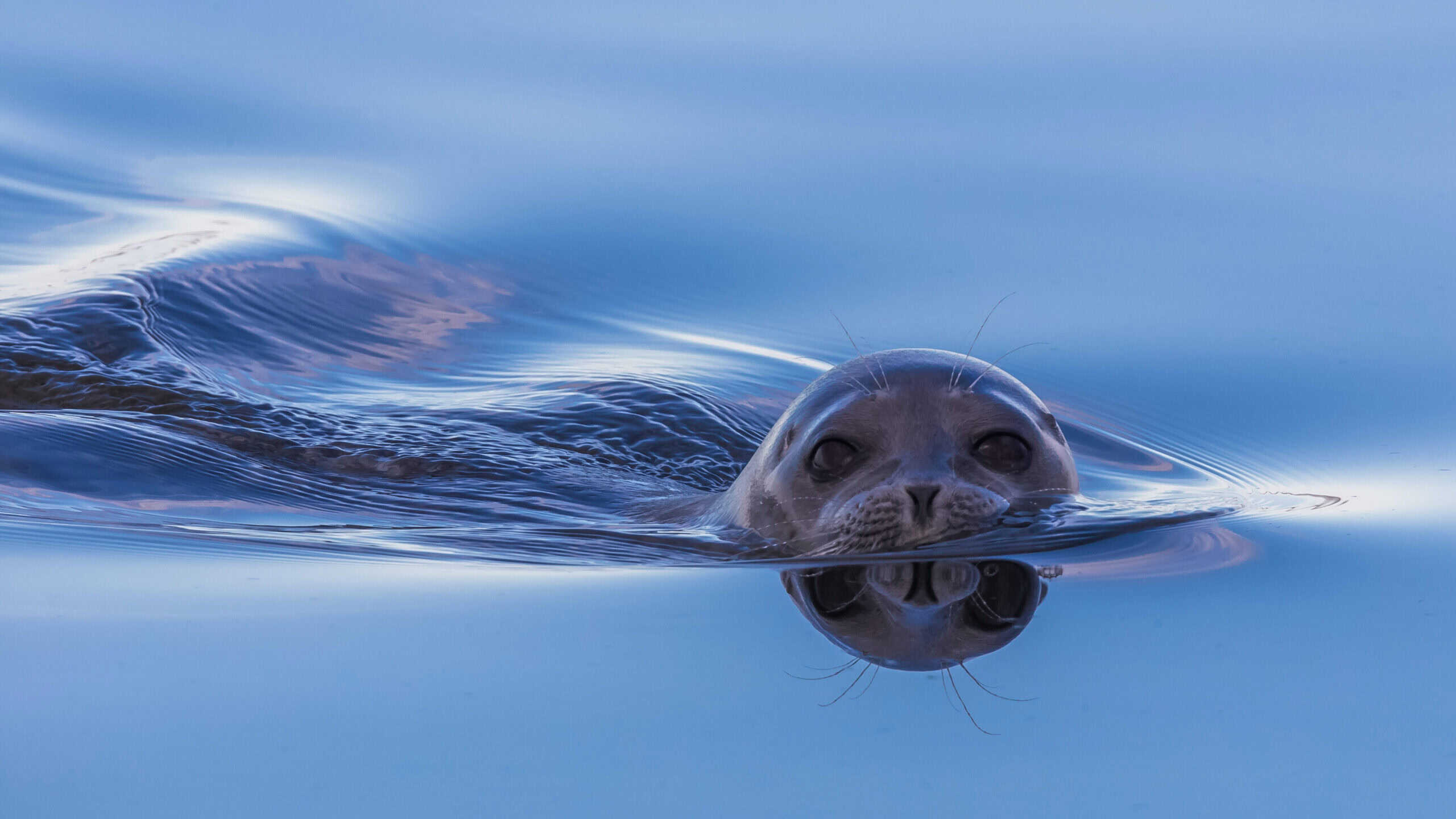
Ringed seals (Pusa hispida) have evolved specialized adaptations that make them the most ice-dependent of all Arctic seals and true year-round residents of Alaska’s frozen seas. These relatively small seals—adults typically weigh between 110-150 pounds—are named for the distinctive light rings on their dark gray coats. Their most remarkable adaptation is their ability to maintain breathing holes in thick sea ice using the strong claws on their front flippers. They excavate these breathing holes from below, keeping them open throughout winter even when ice reaches 6-7 feet thick, allowing them to hunt and travel beneath the solid ice cover while maintaining access to air.
During spring, female ringed seals create snow caves (subnivean lairs) above breathing holes where they give birth and nurse their pups, protected from predators and insulated from extreme cold. These seals have specialized blubber that comprises up to 40% of their body weight, providing both insulation and energy reserves during times when food may be scarce. Their diet consists primarily of Arctic cod and other small fish they hunt beneath the ice, along with various crustaceans. Unlike many marine mammals that migrate seasonally, ringed seals remain in ice-covered waters year-round, making them true specialists of Alaska’s permanent ice habitats and critical prey for polar bears.
Bearded Seals: The Ice-Edge Specialists
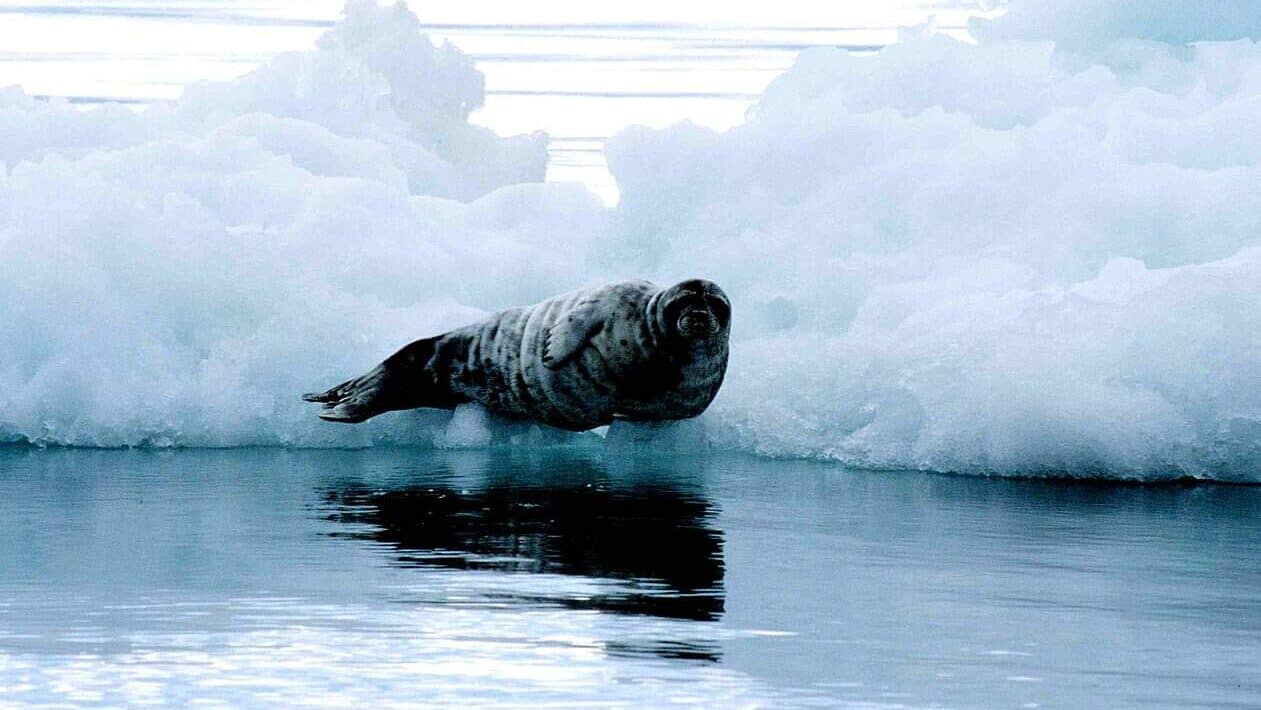
Bearded seals (Erignathus barbatus) are large, distinctive pinnipeds that thrive year-round along the dynamic edges of Alaska’s sea ice. Named for their prominent whiskers (vibrisseae), which they use to search for food on the ocean floor, these substantial seals can weigh up to 800 pounds. Their broad, flat heads and distinctive mustache-like whiskers make them easily identifiable among Arctic marine mammals. Unlike some seal species that prefer thick, stable ice, bearded seals typically inhabit areas where ice is in constant motion, preferring ice floes surrounded by shallow waters where they can easily reach their benthic feeding grounds.
These seals maintain multiple breathing holes in thinner ice using their head and powerful front flippers rather than claws. They are primarily bottom-feeders, using their sensitive whiskers to locate clams, crabs, shrimp, and various fish species in the muddy seafloor. Their diet reflects the shallow continental shelf waters they prefer, typically staying in areas less than 650 feet deep. Bearded seals are known for their distinctive vocalizations during breeding season—complex underwater “songs” that can travel for miles under the ice. Male bearded seals produce these sounds by inflating an air sac under their throat, creating echoing calls that sound remarkably like musical instruments, earning them the nickname “sea canaries” among Alaska Natives.
Ice Algae: The Foundation of Frozen Ecosystems

Though often overlooked, microscopic ice algae form the essential foundation of Alaska’s year-round ice ecosystems. These specialized photosynthetic organisms live within and on the underside of sea ice, creating a golden-brown layer that contains extraordinary biological activity. Despite the seemingly inhospitable conditions, these algae have evolved remarkable adaptations to thrive in sub-freezing temperatures, limited light, and high salinity. They produce specialized compounds that function as natural antifreeze, allowing them to remain metabolically active even when encased in ice crystals. During winter darkness, they can switch to a dormant state, then burst into productive blooms when spring sunlight penetrates the ice.
Ice algae are extraordinarily efficient at capturing the limited light that filters through snow and ice, using special pigments that can harvest light at lower intensities and different wavelengths than typical marine plants. They account for more than 50% of the total primary production in some Arctic areas, making them critically important carbon fixers. As the base of the food web, ice algae support amphipods and copepods that feed directly on them, which in turn become food for Arctic cod and other fish species that seals, whales, and polar bears depend upon. This biological production attached to the undersurface of sea ice creates a concentrated food source that makes year-round life possible for larger animals in these extreme environments.
Arctic Cod: The Crucial Ice-Associated Fish

Arctic cod (Boreogadus saida) serve as the critical link between lower and higher trophic levels in Alaska’s ice-covered marine ecosystems. These small fish—rarely exceeding 12 inches in length—possess antifreeze glycoproteins in their blood that prevent ice crystals from forming in their tissues, allowing them to thrive in water temperatures that hover just above freezing year-round. Their specialized physiology enables them to maintain activity levels in these extreme cold conditions where most fish species would become lethargic or unable to function. Arctic cod are supremely adapted to life associated with sea ice, often swimming directly beneath it where they feed on ice-associated amphipods and copepods.
The ecological importance of Arctic cod in Alaska’s icy waters cannot be overstated—they are often called a “keystone species” because they convert the energy from small crustaceans into food for seabirds, marine mammals, and larger fish. A single ringed seal may consume thousands of Arctic cod annually, while a colony of seabirds can capture millions during the breeding season. These fish form large, dense schools in ice-covered waters, sometimes concentrating in numbers reaching tens of thousands beneath favorable ice structures. Their high fat content—necessary for their own survival in cold waters—makes them exceptionally nutritious prey, providing the caloric density that marine mammals need to maintain blubber layers essential for insulation in icy Alaskan waters.
Ice Worms: Microscopic Glacier Specialists
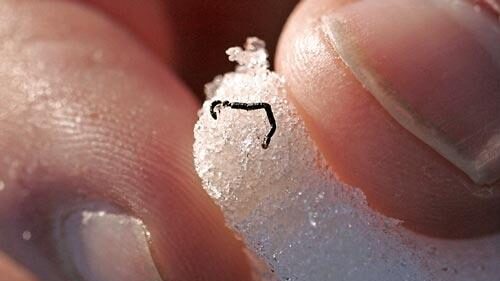
Among the most specialized and surprising year-round ice dwellers in Alaska are ice worms (Mesenchytraeus solifugus), tiny annelids that spend their entire lives within glacier ice. These remarkable creatures, typically measuring just 1-3 centimeters long and about 1 millimeter in diameter, are the only known metazoan (multicellular animal) permanently living in glacier ice. Found exclusively in coastal glaciers from Oregon to Alaska, with the highest concentrations in Alaska’s southern glaciers, these specialized worms have evolved physiological adaptations that allow them to thrive in temperatures just slightly above freezing. Paradoxically, they cannot survive freezing—if temperatures drop below 32°F (0°C), their cell membranes rupture and they die.
Ice worms move through glacier ice by secreting small amounts of heat that melt the ice directly in front of them, creating microscopic tunnels through which they navigate. They feed primarily on algae, bacteria, and organic matter trapped within the ice or carried onto the glacier surface by wind. During daylight hours, they typically retreat deeper into the ice to avoid predators and UV radiation, emerging by the millions onto the surface at night, creating a surreal sight of writhing black specks across the white ice. Recent research suggests ice worms may play significant roles in glacier ecosystems by redistributing nutrients and possibly influencing the rate of glacier melt through their activities, making these microscopic animals important components of Alaska’s permanent ice habitats.
Collared Lemmings: The Arctic’s Underground Survivors
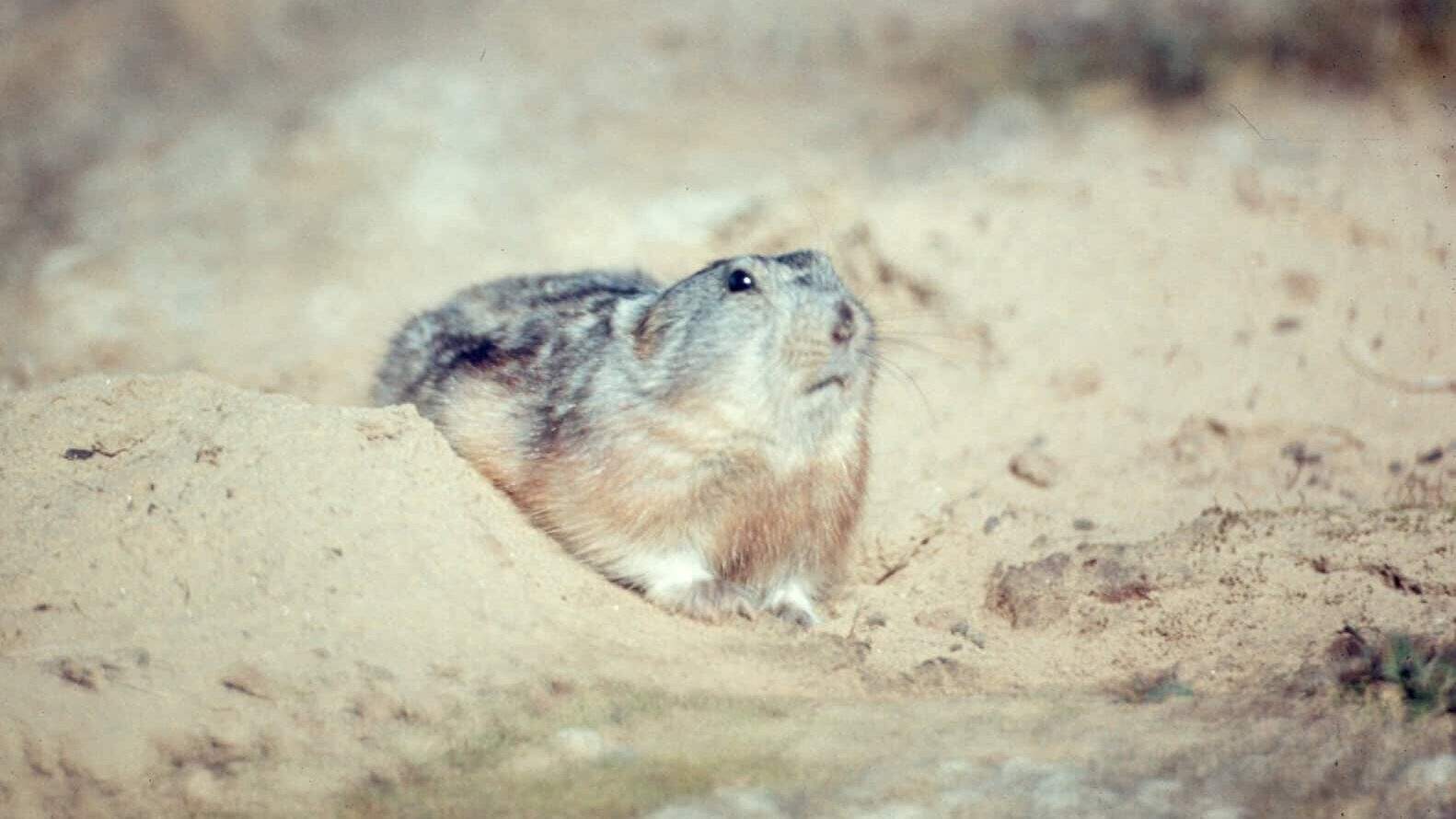
Collared lemmings (Dicrostonyx groenlandicus) are remarkable small rodents that remain active beneath Alaska’s snow-covered tundra throughout the year, even when surface temperatures plummet to lethal extremes. Unlike many Arctic mammals that migrate or hibernate, these lemmings maintain activity year-round by exploiting the insulating properties of snow. They create elaborate tunnel systems in the subnivean space—the area between the ground and snow cover—where temperatures remain relatively stable near freezing regardless of how cold the air above becomes. This microhabitat provides critical protection against the -40°F (-40°C) or colder temperatures that frequently occur in northern Alaska during winter.
Collared lemmings undergo dramatic seasonal adaptations that enable their year-round residency in icy environments. In winter, they grow extra claws on their front feet that effectively transform into “snow shovels” for digging, while their fur changes from brown summer pelage to completely white winter coats that provide both improved insulation and camouflage. Their winter diet consists primarily of frozen vegetation, woody stems, and bark they gather from beneath the snow. Despite these adaptations, winter survival remains challenging—they must constantly balance energy expenditure against limited food resources while avoiding predators like Arctic foxes that can detect them beneath the snow. Their population cycles, which can fluctuate dramatically over 3-4 year periods, reflect the extreme challenges of maintaining year-round residency in Alaska’s icy environments.
Snow Buntings: The Northernmost Songbirds
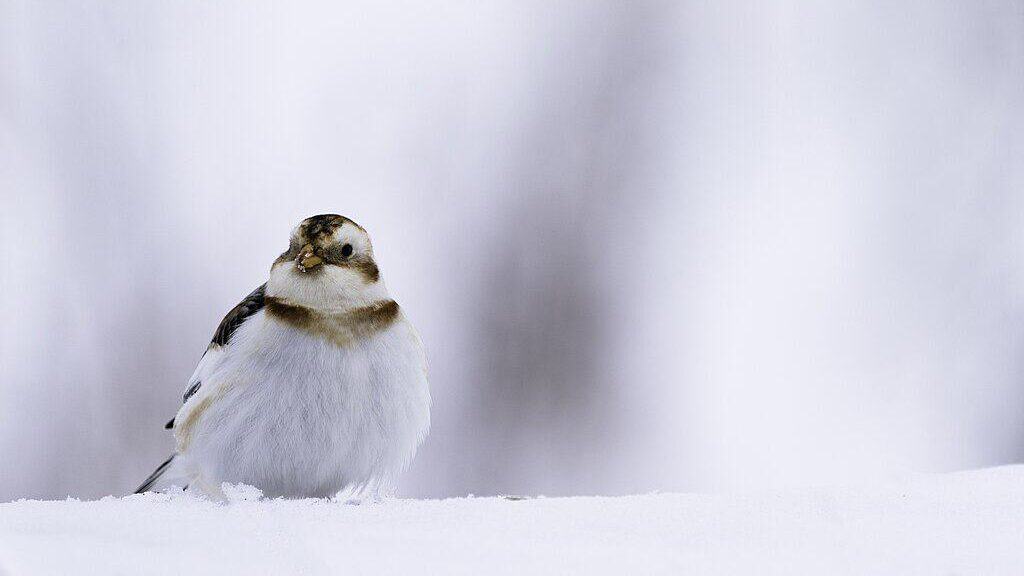
Snow buntings (Plectrophenax nivalis) hold the distinction of being the northernmost regularly breeding songbirds in the world, nesting farther north than any other land bird and maintaining year-round populations in Alaska’s Arctic regions. These hardy birds have multiple adaptations for surviving in icy environments, including the ability to tunnel into snow for insulation against extreme temperatures and winds. Their plumage provides exceptional insulation—they maintain body temperatures of around 104°F (40°C) even when air temperatures drop below -40°F (-40°C). Unlike most birds that become hypothermic to conserve energy during cold nights, snow buntings maintain high body temperatures continuously, relying on their superior insulation and metabolic efficiency.
During the harshest winter conditions, snow buntings employ a remarkable behavioral adaptation—they will deliberately dive into soft snow, creating temporary burrows where they can roost protected from wind and predators while benefiting from snow’s insulating properties. Their winter diet consists almost entirely of seeds they find protruding above the snow, requiring constant foraging to meet their high metabolic demands. Male snow buntings are among the earliest migratory birds to return to Arctic Alaska each spring, often arriving while temperatures remain well below freezing and the landscape is still completely snow-covered. They immediately establish territories around potential nesting sites, even when these sites won’t be snow-free for weeks, demonstrating their exceptional cold tolerance and adaptation to life in icy environments.
Muskoxen: Ice Age Survivors
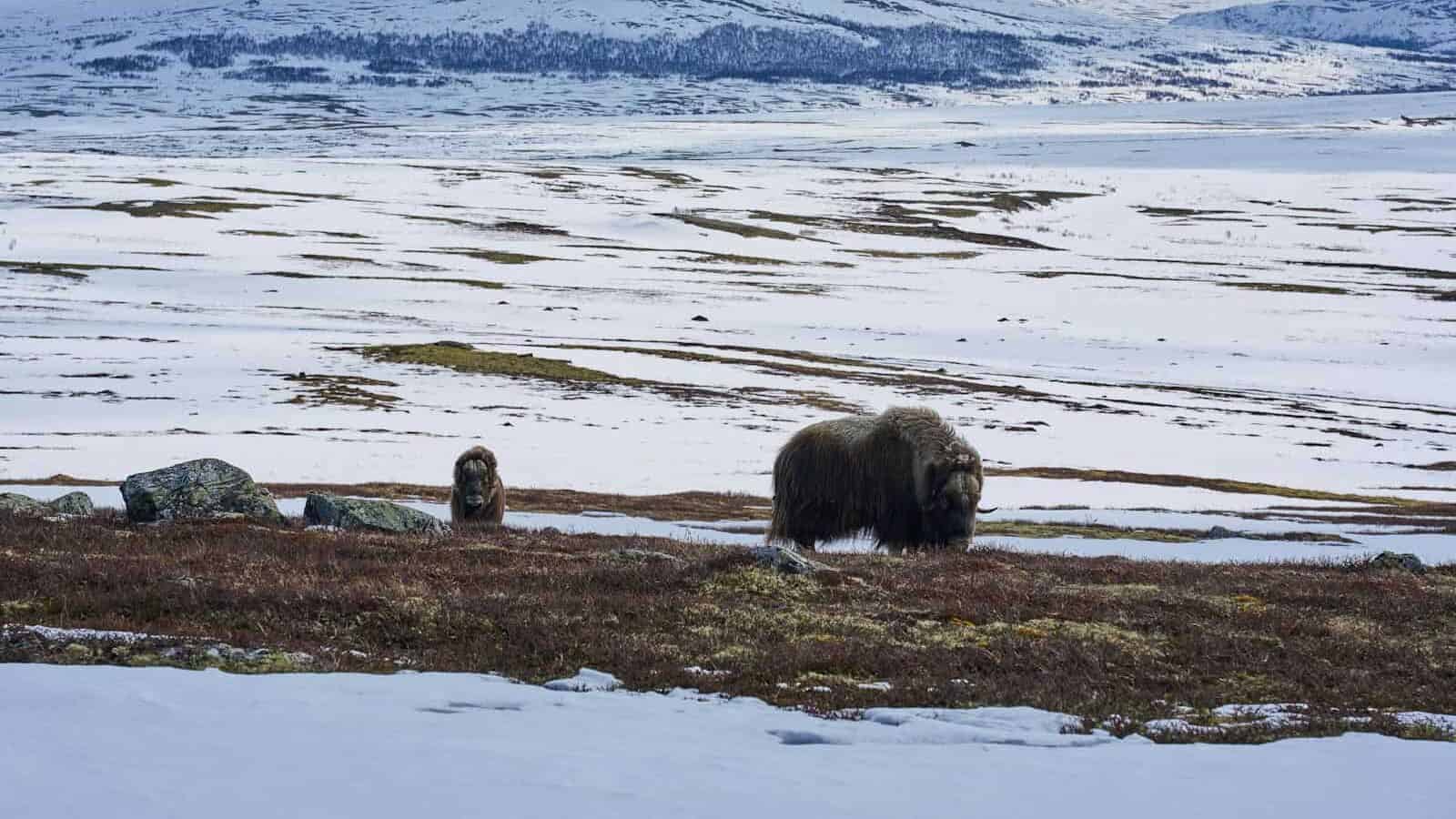
Muskoxen (Ovibos moschatus) represent living relics from the Pleistocene ice age, having survived virtually unchanged for thousands of years in Alaska’s Arctic regions. These massive bovids, with males weighing up to 900 pounds, possess a suite of adaptations that allow them to endure the harshest winter conditions while remaining active year-round. Their most visible adaptation is their extraordinary insulation—beneath the long, coarse guard hairs that reach almost to the ground lies qiviut, an underwool eight times warmer than sheep’s wool and finer than cashmere. This dual-layer coat is so effective that snow landing on a muskox typically doesn’t melt, as almost no body heat escapes to the surface.
Unlike most Arctic mammals that migrate seasonally to avoid the worst conditions, muskoxen stand their ground through winter, using metabolic adaptations that allow them to extract maximum nutrition from frozen vegetation. They conserve energy through reduced movement, sometimes remaining in the same area for days during severe weather. When threatened by predators, particularly wolves, muskoxen employ their famous defensive formation—adults form a tight circle facing outward with calves protected inside, presenting an impenetrable wall of horns. This strategy, along with their ability to paw through snow to reach vegetation and digest extremely fibrous plant material, allows them to maintain their position as year-round residents of Alaska’s icy landscapes, even when temperatures remain below freezing for months on end.
Wolverines: The Ice-Adapted Carnivores

Wolverines (Gulo gulo) are powerfully built mustelids specifically adapted for life in Alaska’s snowy mountain environments, remaining active year-round regardless of temperature or conditions. These solitary predators, weighing between 20-40 pounds, possess remarkably thick, oily fur that provides superior insulation and resists frost buildup—a critical adaptation for an animal that routinely travels through deep snow in sub-zero temperatures. Their oversized paws function like natural snowshoes, distributing their weight on snow while providing excellent traction on ice. Combined with their incredible strength and low-to-the-ground body design, these adaptations allow wolverines to travel efficiently across snowy landscapes where most predators cannot follow.
Perhaps most impressive is the wolverine’s metabolic engine, which operates at a higher level than virtually any mammal of comparable size. This supercharged metabolism generates enough heat to keep them comfortable in the coldest conditions but requires constant caloric intake. Wolverines solve this problem through a combination of hunting, scavenging, and food caching. They can detect carrion buried under several feet of snow and possess jaws strong enough to crush frozen bones and meat that would be inaccessible to other predators. Females dig elaborate snow dens for birthing and rearing kits, often tunneling through 10-15 feet of compacted snow to reach suitable denning locations near rock outcrops
- The Coldest Town in America—And How People Survive There - August 9, 2025
- How Some Birds “Steal” Parenting Duties From Others - August 9, 2025
- 12 Deep-Sea Creatures You Won’t Believe Exist - August 9, 2025

